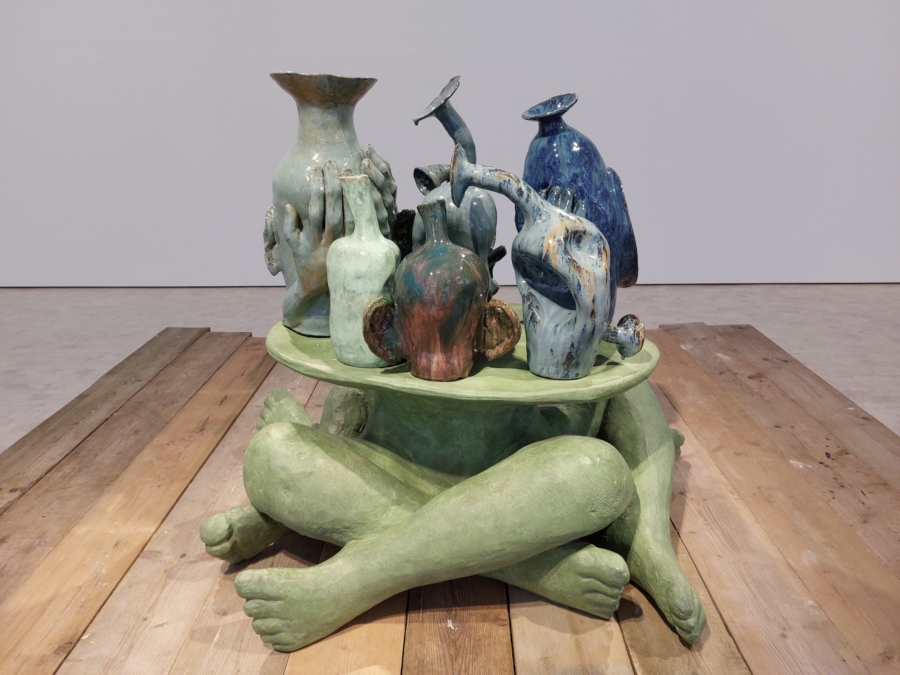April 4, 2024
Download as PDF
View on Hyperallergic

Installation view of Woody De Othello: Faith Like a Rock at Stephen Friedman Gallery, London. Pictured: “the healers gathered around” (2023) (photo Anna Souter/Hyperallergic)
LONDON — There is something instantly recognizable about a bent knee or an upturned hand, universal gestures of supplication or sublimation that span cultures and religions. For his solo exhibition, Faith Like a Rock at Stephen Friedman Gallery, Woody De Othello has assembled a cast of hybrid clay objects in which the division between worshipper and worshipped is distinctly blurred.
In “the healers gathered around” (2023), the ambiguity of the title echoes the multiformity of the sculpture itself. The work consists of a cross-legged figure with two pairs of legs instead of arms and legs, recalling traditional depictions of the Buddha or a congregation member seated in meditation. Cut off at the waist, the torso splays out into a surface holding a collection of ceramic vessels, many of which sport human appendages such as hands and ears. Are these vessels sentient beings? Or are they containers for things unseen, such as medicines or holy relics? It is an uncanny, metamorphic assemblage, balancing familiarity with jarring strangeness.
Othello evokes a strong religious sensibility without interrogating specific theologies. The artist combines references to major international religions with allusions to the ancient world and Indigenous belief systems. For instance, several works feature carved falcons, an animal sacred to the Egyptian god Horus, and a Yoruba symbol of the force connecting the earth to the world of spirits.
Despite the gravity of the references, a welcome sense of humor runs throughout the presentation. In “Iron Hammer” (2024), a trio of yellow-glazed legs support a domestic iron, perched like a misshapen torso or an object of misguided devotion. A vast expanse of red carpet and red wall surround the sculptures “Divine support” (2024) and “search for change” (2024), which are marooned on a low plinth in a way that is somehow simultaneously playful and melancholy.
In the cavernous space of one gallery, Othello eschews plinths altogether in favor of three wooden rafts made from shipping pallets, on which groups of sculptures are evenly spaced, as if to balance their weight for a perilous sea journey. As well as alluding to the practical process of assembling the exhibition and making an attractive display, the pallet rafts read as a subtle but powerful nod to histories of migration and diaspora, to how both bodies and cultures from the African continent have been shipped around the world — and have shaped and been impacted by other parts of the globe.
Much of Othello’s engagement with ancestry and place comes from his practice with clay, which he approaches as a primordial substance that offers a conduit to pre-colonial rituals and ways of living. From the Christian creation narrative to the spirit-inhabited nkisi objects of Central Africa, many cultures have stories about clay figures becoming animated through an infusion of life, whether the results are human, otherworldly, or monstrous. Via his three-dimensional collaging of clay objects, Othello invokes the creative force of artists and deities, both of which are equally dependent on the faith of the congregation.



